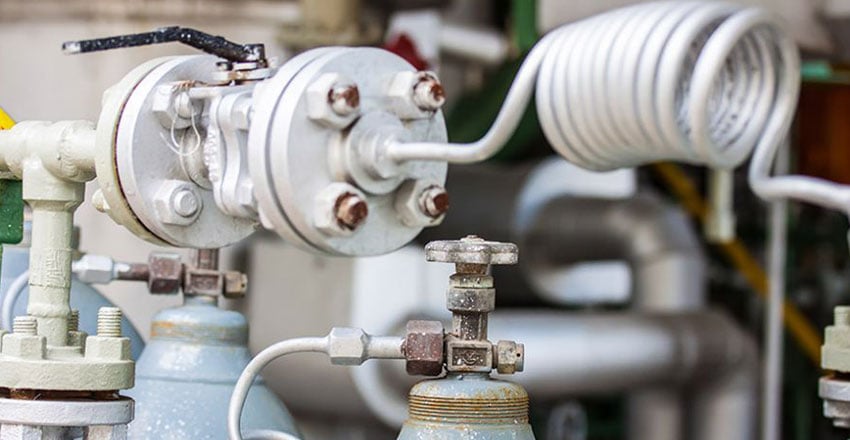Nitrogen gas provides a number of diverse uses for a wide variety of manufacturers. As a sister function of compressed air, on-site nitrogen generation can provide additional opportunities for cost savings and other efficiencies for manufacturers who shift from delivered liquid nitrogen service.
A number of variables factor into any capital purchase or process change decision-making method for most manufacturers. Will these changes make our workplace a safer environment for our employees? Do the decisions we make in turn make us better environmental stewards, more responsible neighbors and a leader among our industry peers? And, finally, can we realize greater efficiencies as well as a quick return on our investment with these changes, and how will moving in a new direction translate into exponential savings in the long run?
When the answer to all of these questions is a resounding “yes,” it becomes difficult to find reasons not to change the status quo. That’s why a number of manufacturers who depend on nitrogen gas as a critical function of their business are shifting from liquid nitrogen delivery to on-site nitrogen gas generation. It becomes easy to justify the change when these companies realize they can generate savings of 40 percent to 80 percent, depending on current liquid nitrogen market prices, with a shift to on-site nitrogen generation.
Reduce Costs
The cost of delivered liquid nitrogen in the industrial marketplace can range, depending on market costs and delivery location, from $0.35 per hundred cubic feet to $1.50 per hundred cubic feet. In cylinders, the price can jump as high as $3 per hundred cubic feet. Shifting to the use of on-site nitrogen generation can initially drop costs to around $0.21 per hundred cubic feet, regardless of the user’s location.
Even with the capital costs associated with onsite nitrogen generation (for equipment such as nitrogen generators, air compressors, receivers, site preparation, power and associated maintenance), customers can realize a return on investment in as few as nine to 24 months depending on what equipment they already have at their facility. In each subsequent year, regular operational expenses can drop even further to about $0.11 per hundred cubic feet – just maintenance and energy costs.
These savings do not include supplementary costs from nitrogen suppliers, which vary by region. A set number of variables – liquid nitrogen costs per hundred cubic feet, tank rental fees, delivery charges, hazmat charges and numerous other miscellaneous costs are regular sights on delivery invoices. The environmental impact is also compounded by the delivery vehicle when considering the required diesel fuel and associated carbon emissions.
Additionally, liquid nitrogen delivery requires that the nitrogen gas first be converted to a liquid for truck transport before being converted back to nitrogen gas once onsite. Making liquid nitrogen requires a great deal of electric energy, as the liquefaction point of nitrogen is -320 degrees F. Yet 80 percent of nitrogen uses are as a gas and not a liquid.
Product loss during the transportation process – nitrogen facility to truck and truck to manufacturing facility – contributes to exponential product waste. Delivered nitrogen must also be stored onsite prior to use. In a cooled tank, customers who have nitrogen delivered to their facility will lose an automatic 10 percent of the delivery volume to waste. Furthermore, a tank with a good vacuum will lose a minimum of .4 percent of the volume each day if internal pressures are allowed to build when product off the top of the tank is not immediately used. Purging to relieve this pressure only contributes additional unnecessary waste.
On-site nitrogen equipment providers like Atlas Copco can work with manufacturers to develop a spreadsheet to help them identify the ultimate savings that are waiting with a shift from delivered liquid nitrogen to on-site generation in a variety of industries.
Food manufacturing facilities, utility manufacturers, including petroleum refineries and other power-based generation facilities, electronics, chemical and pharmaceutical operations that depend on compressed air often rely on nitrogen gas. In some industries and locations having membrane or PSA supply nitrogen applications on-site is a necessity, like offshore drilling and mining where vehicular delivery is difficult or cost prohibitive. On-site nitrogen generation can also help achieve greater purity levels – particularly with sensitive or delicate applications like pharmaceutical, electronics and chemical manufacturing fields.
Increase Employee Safety
Employees are a manufacturer’s greatest resources, and providing a safe work environment is any employer’s primary concern. With on-site nitrogen generation, the potential for worker injury associated with storage tank leaks and possible exposure to the -320 degree Fahrenheit liquid nitrogen during the delivery and unloading process is automatically eliminated. Remember the high school science classes where a teacher donned rubber gloves and dipped a delicate rose into liquid nitrogen before shattering the immediately frozen petals on a table top? Serious burns from exposure to skin are very dangerous and also very possible with delivered nitrogen generation.

